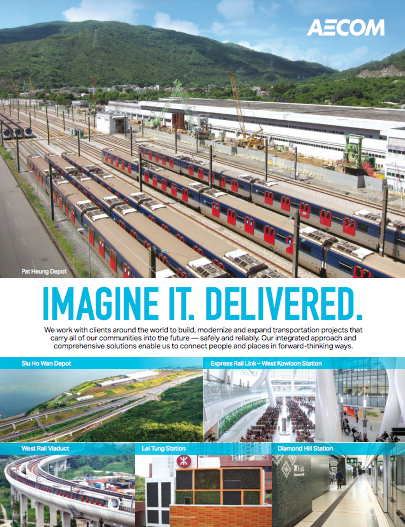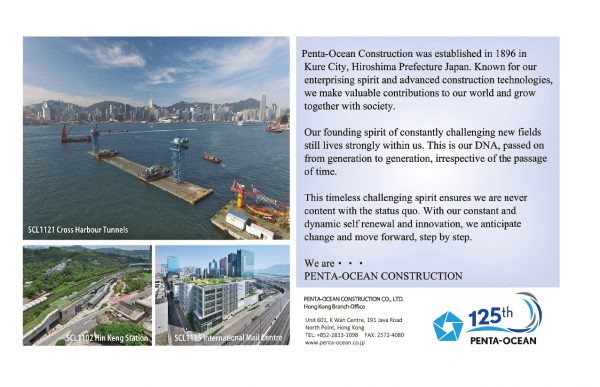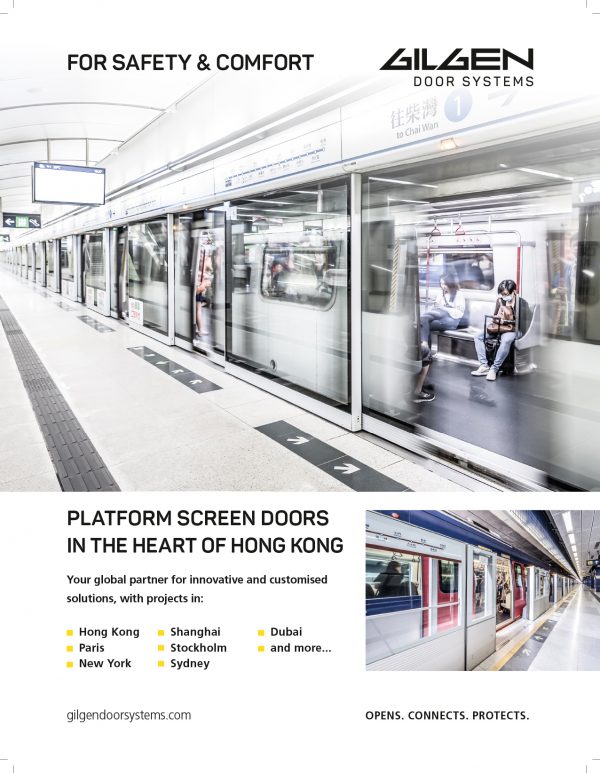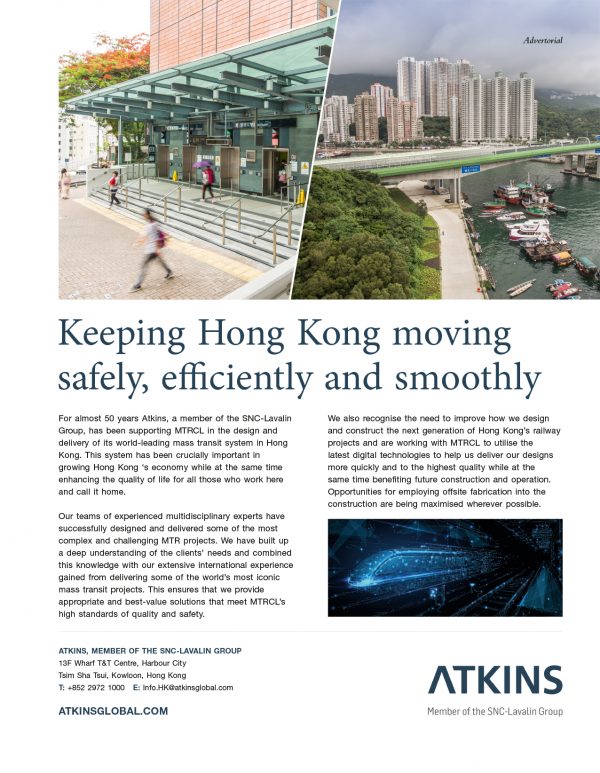After an absence of 15 years from the company, Roger Bayliss decided to rejoin MTR Corporation in Hong Kong as Projects Director in early 2019, a time when the railway giant was braving challenging waters.
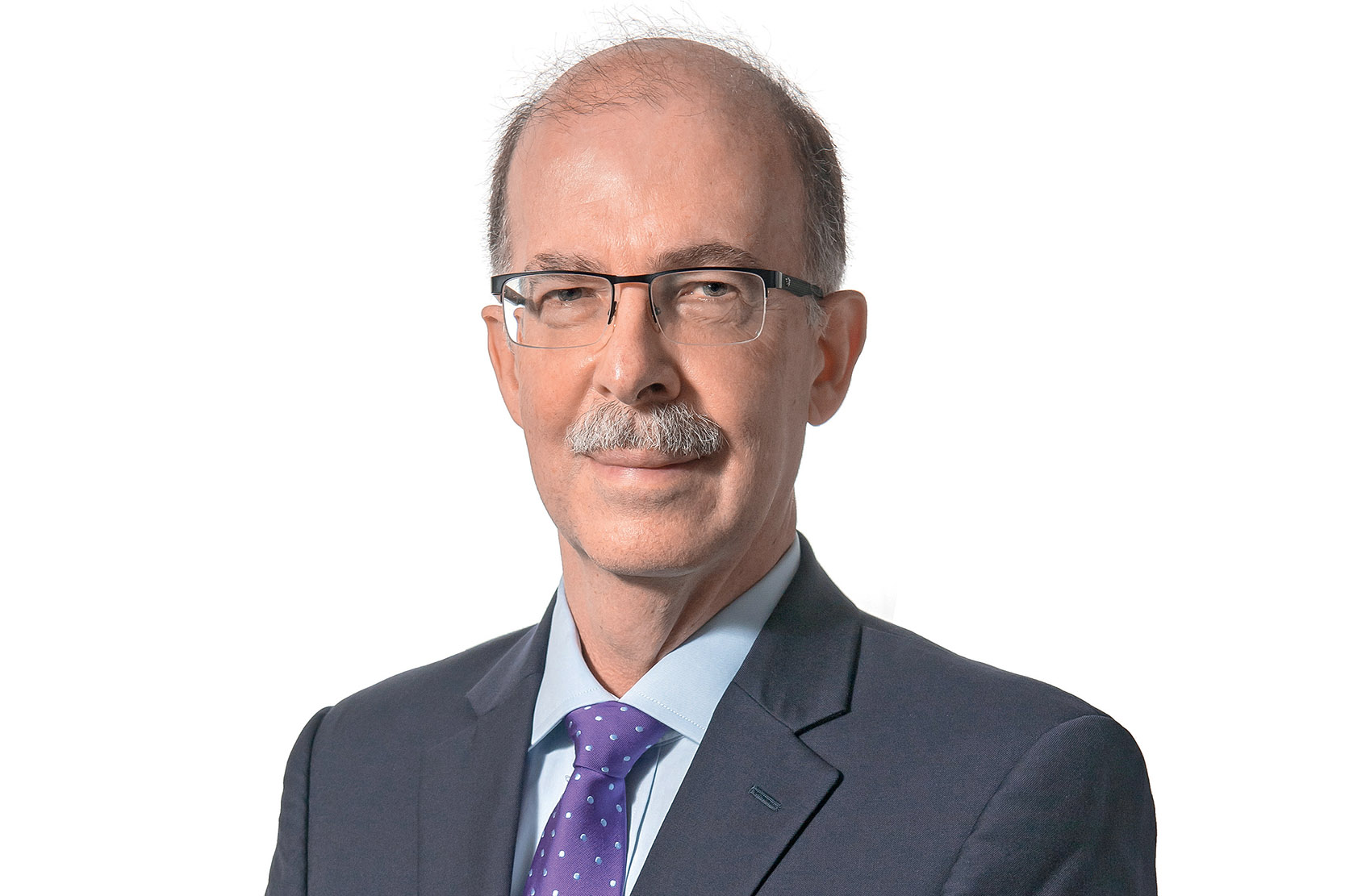
Yet this was part of the reason he came back. Roger joined the MTR Executive Directorate, overseeing the Corporation’s capital works portfolio of new railway extensions and projects on the operating railway in Hong Kong.
In some respects, has come full circle in his career. Roger previously spent 12 years with MTR managing key sections of rail lines including the Tung Chung and Airport Express lines, the Tseung Kwan O extension and the Ngong Ping 360 cable car. He considers that period at MTR “a fantastic time”, adding,
“Those were, I would suggest, the most formative years of my development.” MTR Corporation, established in 1975, has constructed and been operating an expanding metro system in the Asian financial hub, delivering the city’s world-class railway infrastructure, which consistently operates at a 99.9% on-time performance level.
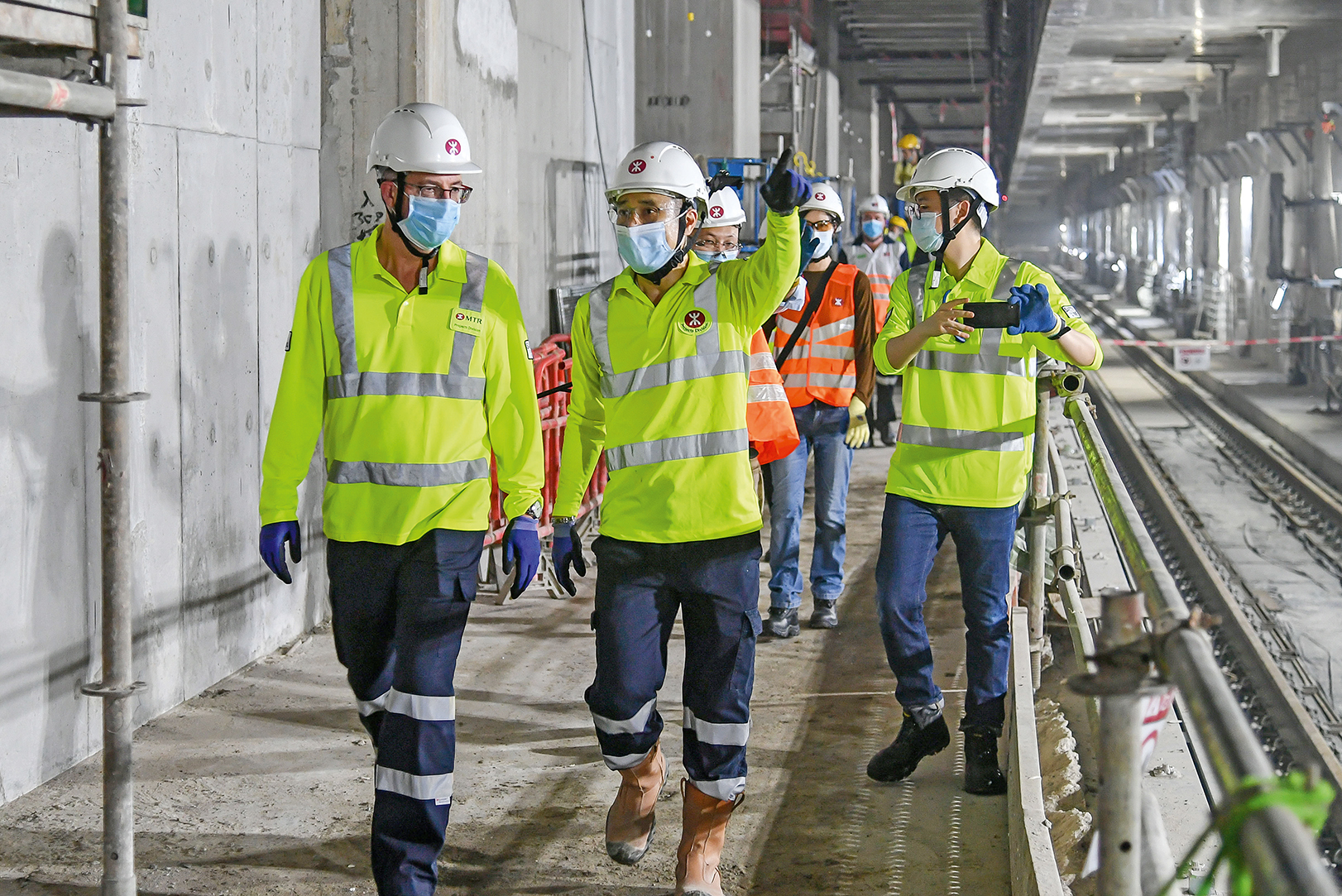
In mastering the construction and running of a highly efficient metro network in a city well known for its population density, MTR has built an enviable reputation, enabling it to successfully win contracts to operate railway networks beyond Hong Kong – mainland China, the UK, Sweden and Australia.
I’ve always been one for continuous improvement; I believe there are always better ways of doing things.
Roger has contributed to the development of the company’s business in mainland China, setting up a project management office in Shanghai, until 2004 when opportunity beckoned elsewhere. He was Group Construction Director, overseeing construction activities across seven airports for BAA (now Heathrow Airport Holdings) until 2006, before joining Skanska, eventually taking on the new Group role of Senior Vice President Operational Efficiency.
Roger returned to MTR in March 2019, less than a year after the company experienced an unexpected crisis that called for soul searching from within the thriving organisation.
The setback centred on one problematic contract out of some 60 major contracts on the Shatin to Central Link (SCL) rail project from a quality perspective, Roger says, referring to what became the subject of a Commission of Inquiry. But it has taken lessons from the findings and the quality issues have now been addressed, he adds.
It is not the first time a successful organisation realises the need to rethink and change. Out of crisis comes opportunity, Roger believes. The episode has given him the opportunity to act as an agent for change in the business, and he’s not letting the grass grow under his feet in his drive to see them through.
“We’ve taken the Projects Division and combined it with the majority of the Engineering Division to create the new Capital Works business unit, which will operate under sound business principles,” Roger explains.
“I think capital works more accurately reflects what we do – we don’t just deliver projects, we are also involved in their inception. We look at project studies, engage with government in planning future railway projects, and we also work with our operations teams to develop and deliver a portfolio of replacements, upgrades and improvement projects on the existing railway.”
Last year, the previous Projects Division made major progress on the SCL project, opening the first part of Tuen Ma line, one of the two lines involved, and delivered some HKD4 billion (US$516 million) worth of work on the operating railway.
With about 1,250 current staff, the new business unit is set to grow as a number of new railway extension projects come on stream and the volume of work on the operating railway increases.
There’s a business rationale to partnering; it’s not about a cosy relationship.
This year MTR will open the full Tuen Ma line, connecting the existing Ma On Shan and West Rail lines. At 56 kilometres, this will be the longest railway line in Hong Kong. The East Rail line from Hung Hom to Admiralty cross-harbour section, the city’s fourth harbour-crossing rail connection, is planned to commence operations next year.
MTR also began the design of the Tung Chung line extension and the Tuen Ma line extension projects last year, both comprising two station extensions to existing lines.
This year, design will also commence on the Northern Link, creating a connection in the northern New Territories between the existing East Rail and West Rail lines, and the development of the existing Siu Ho Wan Depot on the north shore of Lantau Island.
The MTR Corporation
was established in 1975 to construct and operate a metro system in Hong Kong. Today, the organisation carries more than 13 million passenger journeys worldwide every weekday in Hong Kong and the Mainland of China, as well as the UK, Sweden and Australia.
“This is a really exciting project, because it will facilitate the provision of some 20,000 residential units above the existing depot. To do that we will be doing a lot of depot rearrangement and building a new podium over the depot. We’ll also be providing a new station on the Tung Chung line to enhance connectivity,” Roger says matter-of-factly.
The last time MTR embarked on a new railway extension project portfolio was some 10 years ago, the distant past in the realm of digital and technological advancement.
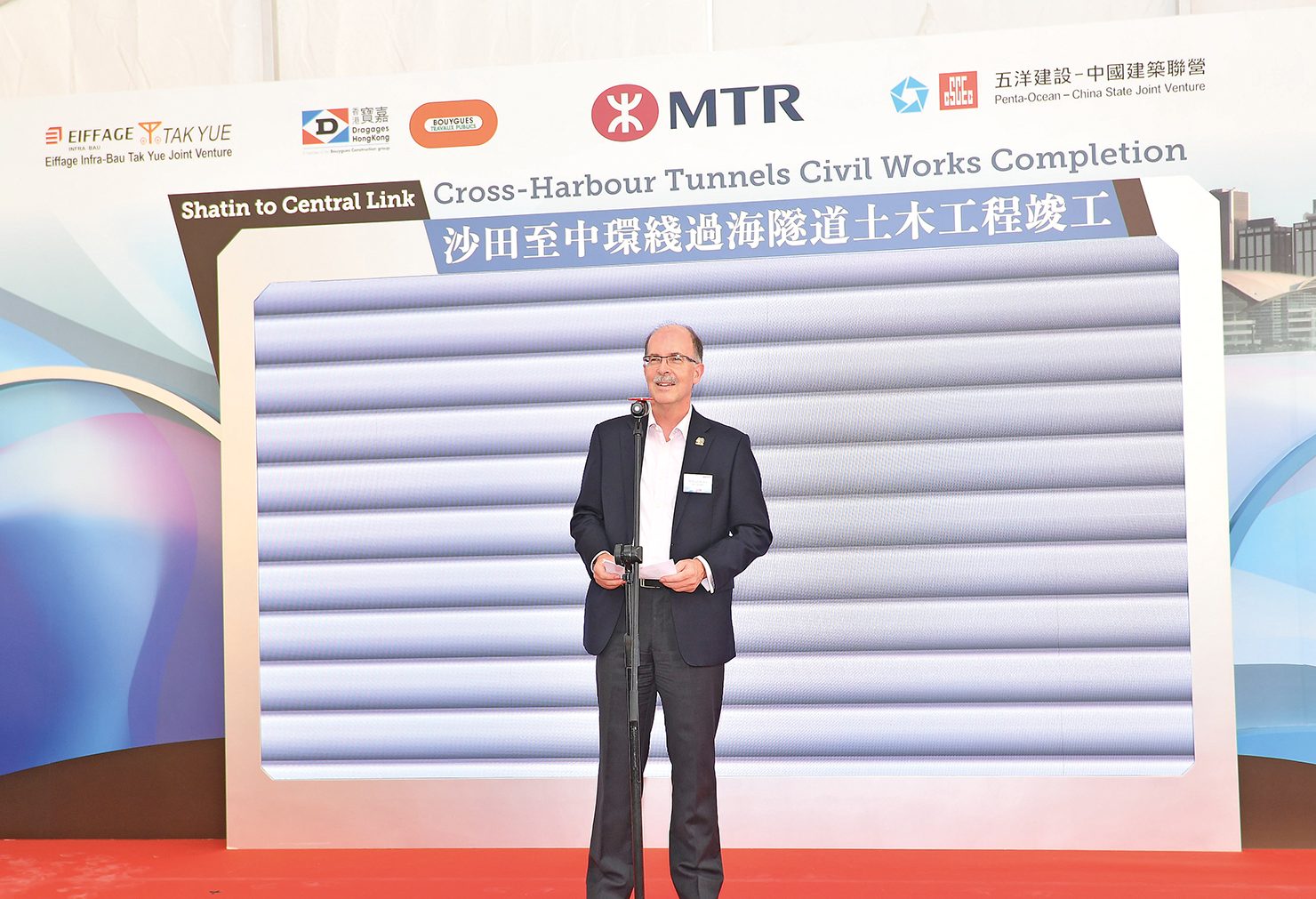
Roger is thus adamant that as MTR heads into this new portfolio of works, it has to embrace the latest ways of project delivery. The new projects provide a great opportunity to revisit how it approaches projects.
Driving change
“There are a number of drivers for these changes,” Roger elaborates. “The Corporation’s board commissioned a study into our project management practices and came up with several recommendations. Indeed, it’s quite natural for any organisation to periodically review its approach to project management, especially as it closes out one portfolio of projects and embarks on another.
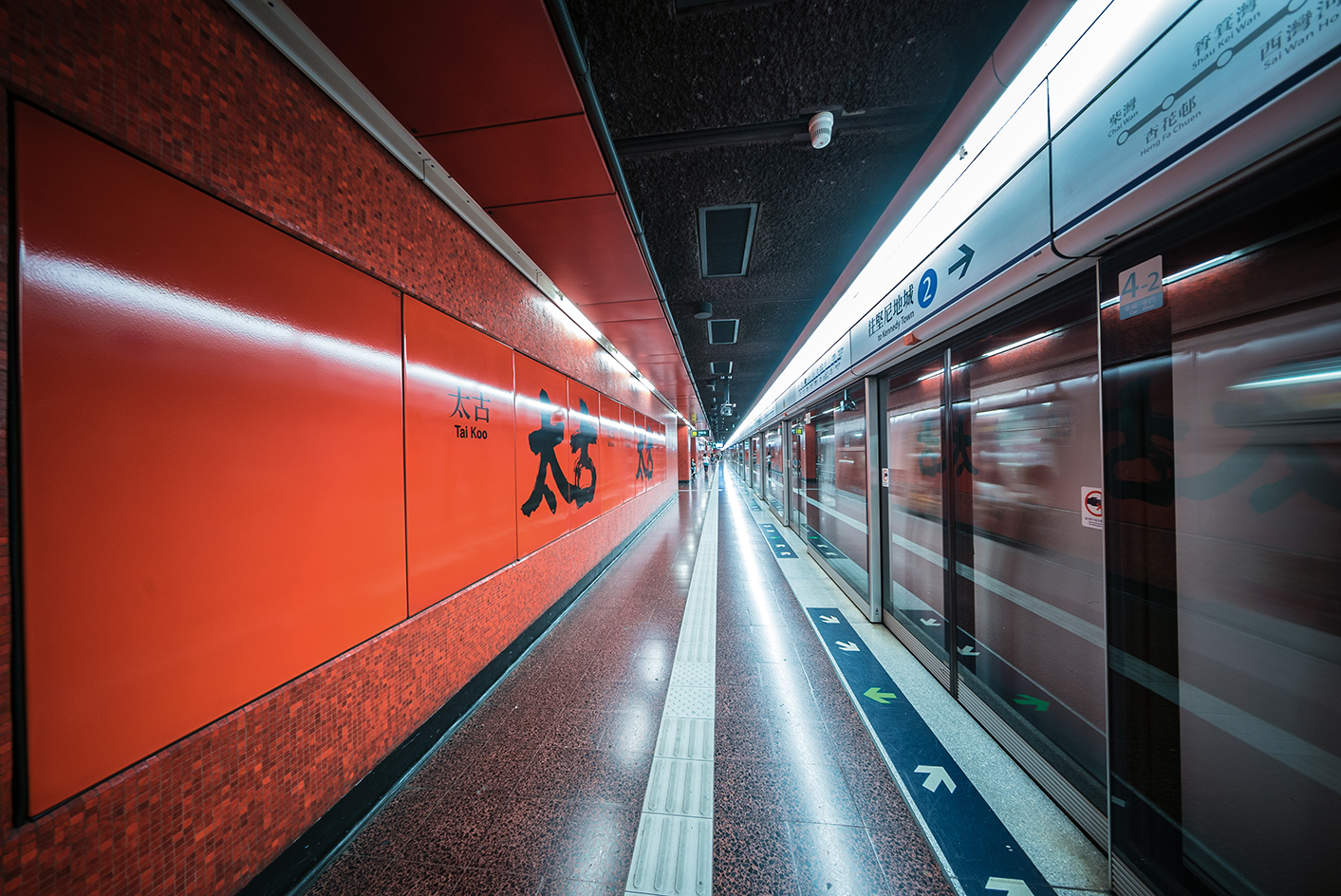
Having spent 12 years with MTR previously, I had a good understanding of how the Corporation operates, but I’d also seen other ways of doing things with my experience elsewhere, so I brought quite a lot of that thinking with me when I rejoined. So, we’ve got a significant change program underway at the moment called Building Excellence.”
Driving digital
MTR is going digital, Roger adds enthusiastically. Its once paper-based project management system is being converted into digital formats, available through the company’s intranet.
Roger Bayliss – Career at a Glance
1975–1978 – Engineering degree, Cambridge University
1978–1992 – Junior Engineer to Project Manager, Costain
1992–2004 – Construction Manager to Executive Project Manager, MTR Corporation
2004–2006 – Group Construction Director, BAA
2007–2008 – Project Director, Skanska
2008–2016 – Member of the Executive Management Team, Skanska UK
2010–2016 – CFO, Skanska UK
2016–2019 – Senior Vice President Operational Efficiency, Skanska AB
2019–present – Projects Director/Capital Works Director, MTR Corporation
As part of the Building Excellence program, it is introducing an updated, modernised and digital Project Integrated Management System, which will also be available on mobile devices to make it more accessible.
“We’ve got a working group looking at digital, with three aspects: digital project management, digital engineering and digital onsite,” Roger says.
“Each has a number of initiatives, some of which we’ve already embraced; for example, digital engineering now uses building information modelling or BIM.
We will be using BIM on all new projects and we’ve started using digital site supervision tools, more digital reporting, and the digital agenda will no doubt further develop. We’re also starting to look at digital applications of our contract systems.
“For digital onsite, we use drones, smart hard hats, augmented/virtual reality and laser scanning, and we are starting to use artificial intelligence; again, all of these will develop. There’s a lot of opportunity in the digital space. In my last role with Skanska, I led the development of its digital strategy, so it’s something very dear to my heart. I’m absolutely passionate about it because I think digital is a huge opportunity for the construction industry.”
With all these changes underway, Roger is delighted that in a staff survey, colleagues believed the business unit is going in the right direction, and are very positive about new digital ways of working.
Then came Covid-19
When COVID-19 struck, Hong Kong was already challenged by public order events that Roger and his team hadn’t expected; then came the pandemic. To deal with that, virtually overnight, MTR’s teams and contractors set up onsite welfare facilities with separation and enhanced cleaning facilities, all of which were well received by the labour force.
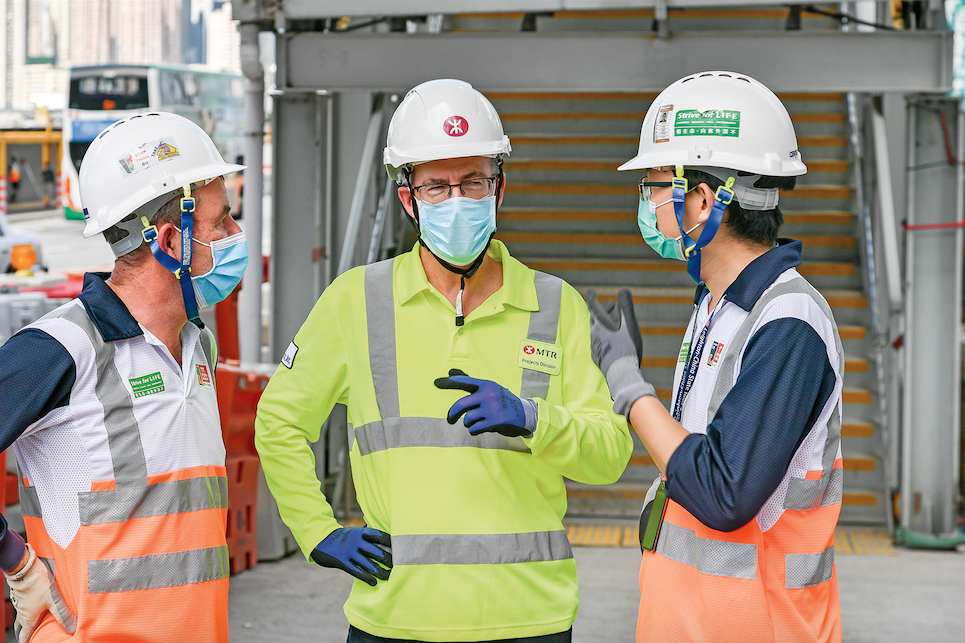
“The disruption to our projects has generally been quite localised, with MTR finding ways of dealing with it,” he notes. “I have to say, I have been hugely impressed with the way in which the project teams, MTR teams, contractors and consultants have dealt with the adversities. We have seen very little disruption to our projects.”
Change management
MTR has a proud tradition of delivering services for the Hong Kong public over the past four decades with a can-do, service-oriented spirit. That hasn’t changed, Roger says, but when he returned, he established a Projects Division Leadership Team because “I think so much starts with leadership”.
As a leader your role is ultimately leadership, but you do have to at least stay in touch with the detail.
“Last year, with that team, I developed a new vision, mission and set of behaviours for the Projects Division. That, to me, is setting the flag on the hill – something that everybody can aspire to and aim for. It doesn’t matter whether you’re an engineer or inspector onsite, an administration assistant in the office or a general manager overseeing the project management office, there’s that one flag on the hill that we all aim at.”
Within the Vision, Mission and Behaviours (VMB) the leadership team has defined eight behaviours which project colleagues are expected to exhibit. Performance against those behaviours is now tracked.
One concept Roger was passionate about before he left in 2004 was project partnering, creating a more collaborative working environment to drive out waste and improve project performance.
“There’s a business rationale to partnering; it’s not about a cosy relationship,” he insists. “In fact, I would argue that real project partnering is tougher than conventional contracting, because with conventional contracting you just pull the contract out of the drawer, read the contract and that’s what you do.
“With partnering, you still have the contract and your obligations to each other, but you engage, you discuss, you find out how together you can overcome challenges. By working at things together, you drive out waste, you reduce conflict and you challenge each other to deliver your respective obligations.”
He points to the last project he worked on during his previous tenure at MTR, the Tseung Kwan O extension, as proof – it was a very successful project delivered ahead of time, under budget and with high-quality results.
The introduction of project partnering was widely recognised as one of the key contributing factors to that success, he proudly notes, having himself been involved in establishing and driving the partnering strategy.
“In fact, people got bored of my banging on about partnering. Now I’m revitalising that and we are in the early stage of developing a partnering strategy for our new projects that will be applied to each project. We’ll make sure that people fully understand it.”
Back at MTR
Roger’s return to MTR may appear to be a full circle in his career, but when he heard about the difficulties in which the Corporation was mired, he felt that with his previous tenure there, combined with his experience, knowledge and abilities acquired from 15 years away, he could help the company address the challenges it faced.

“We’ve got great people; it’s a great organisation. When I was here last time, we were held up as a shining example across the globe, and that’s what we’re aiming for again. In fact, our vision, if I’m being a little cheeky, is ‘proudly delivering, embracing innovation, globally recognised’.”
Skills in leadership
Roger’s wealth of experience from his work as a client and contractor in the UK, Hong Kong and the mainland of China, and also internationally during his years with Skanska, has shown him many ways of managing and delivering not just projects, but also business results.
“I’ve seen a lot, so I’ve got lots of relevant experience, but what I try to do is work through others,” he explains. “I create a sense of direction and try to draw others into developing that so there’s co-ownership of the leadership agenda. And should things need to change, I’m quite happy to change.”
With that sense of direction and joint ownership of the leadership agenda, he enables them to lead their designated areas and tries to support them rather than do it for them or get bogged down in details. But having said that, Roger admits to occasionally digging down into the detail with his team.
“I’m a firm believer that as a leader your role is ultimately leadership, but you do have to at least stay in touch with the detail,” he says. “So, every now and then, you have to go down into the weeds, but you can’t do it all the time.
“I also think you need to show interest in people because, ultimately, it’s a people business. I like nothing better than actually engaging with our staff. Typically, every Saturday morning I do a site visit to make sure I catch up with our staff and find out what is really going on. I hugely enjoy that.”
It’s a lesson he learned years ago when he was working for the company’s then Project Director Russell Black. “One of the things he was very keen about was making sure he kept in touch with the inspectors on site,” Roger remembers.
“They are the eyes and ears of the Corporation, which is where I learned that you have to engage with your staff.
“The second person who was instrumental in my thinking is Mats Williamson, who was my boss when I was part of the Skanska UK executive team and again later when I was doing my Group role. What I really learned from Mats was thinking about how organisations work and how to constantly strive for improvement. I’ve always been one for continuous improvement; I believe there are always better ways of doing things.”
Spending his time out of the office hiking, clearing his head and reflecting on issues at hand, Roger finds not being pinned down by phones and meetings a release, although after COVID-19’s constraints on personal interaction, he appreciates the connection that dealing with people in person brings.
It’s fundamental, he believes, to successful teams and, ultimately, a successful business. “Many of our meetings are now held virtually and that’s improving efficiency, because we’re not wasting time travelling. Having said that, I do think we need to be mindful of the fact that it is a basic human need to interact with others,” he says.
“When COVID-19 subsides, I do see us retaining a lot of virtual meetings, but not exclusively. I think we will go back to some human interaction, some physical meetings and gatherings. When you’re building teams, you really need to have people in the same space.” As Roger says, it’s a people business.
Proudly supported by:
